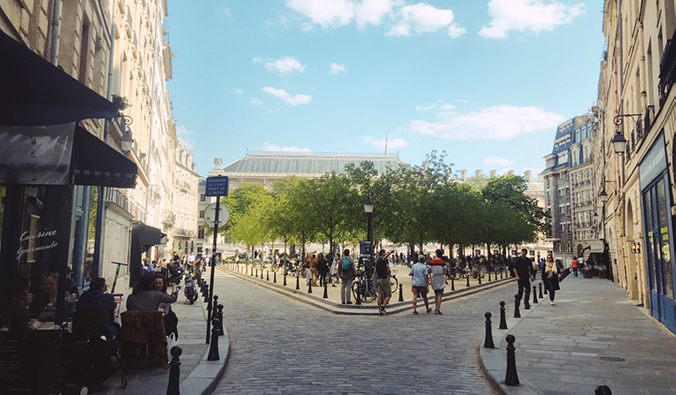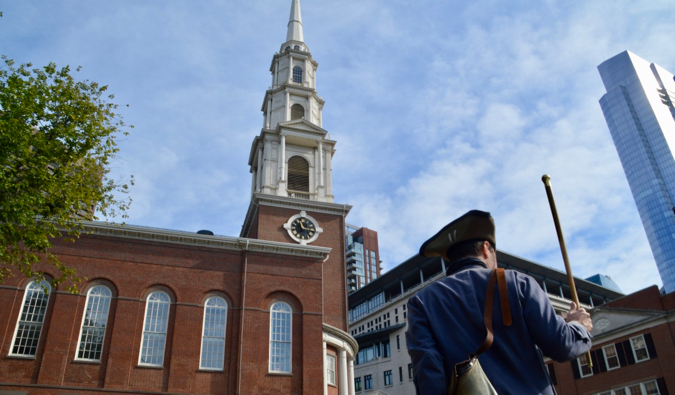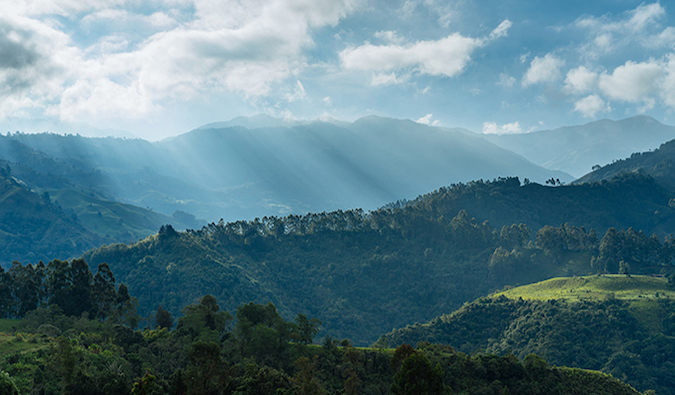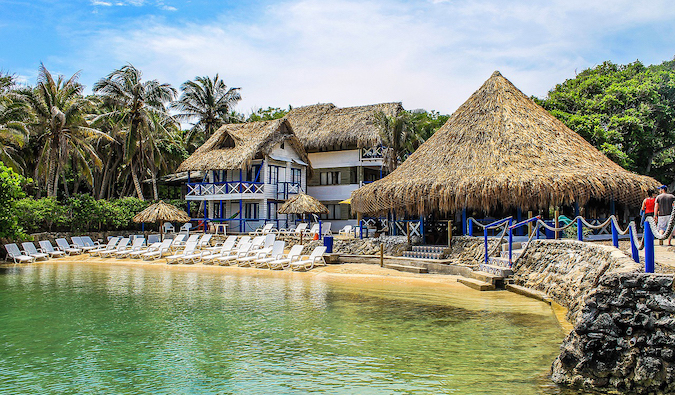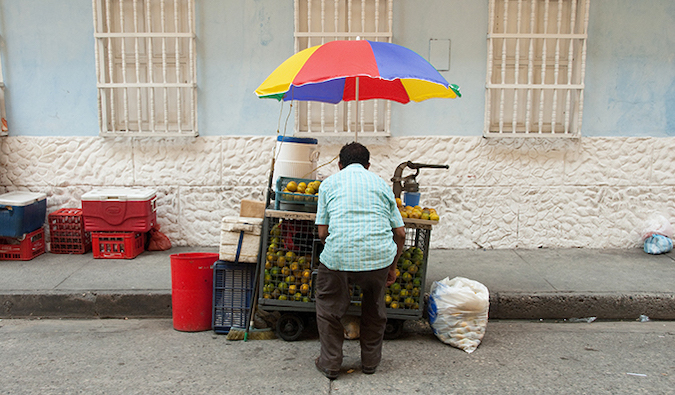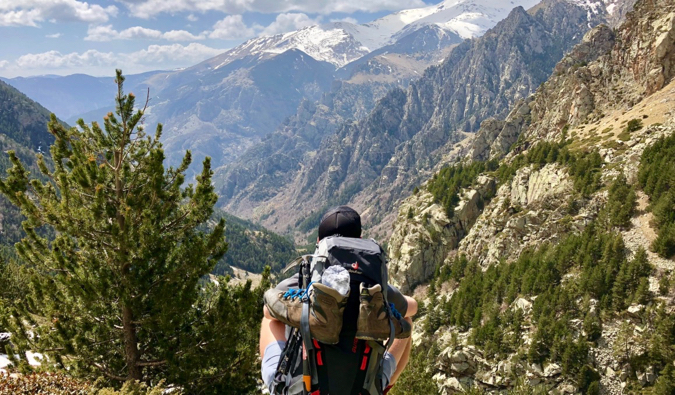
Posted: 6/16/2019 | June 17th, 2019
I’m a backpacker at heart. Even after traveling the world for over a decade, I still love to travel cheap, prioritizing experiences over fancy accommodation and transportation. I still love staying at hostels, meeting locals, and sampling as many local delicacies as I can.
Contrary to popular belief, being a backpacker is not about pinching every penny — it’s about finding value. If you want to have a genuine and authentic trip without breaking the bank you need to spend your money wisely.
And when it comes to backpacking around the world, one of the wisest choices you can make is to purchase travel insurance.
I know, travel insurance seems like just another expense that will chip away at your budget. I used to think that too.
But it also has the potential to save you thousands of dollars should something go wrong on your trip.
And after traveling around the world for the past 10 years, I can confidently tell you this: things will go wrong.
To help you stay safe on your next trip, here is everything you need to know about buying insurance as a backpacker.
Table of Contents
Why Do Backpackers Need Insurance?
The reason you need to buy travel insurance is because accidents happen. Regardless of whether you’re at home or abroad, things go wrong. At home, you likely have access to medical care and reliable medical facilities.
On the road, that isn’t always the case.
While serious injuries are rare, they do happen. And it’s always better to be safe than sorry. But insurance isn’t just for medical emergencies. It also covers a lot of incidents that are much more common than you think!
Here’s a quick overview of what you can expect your backpacker insurance to cover:
- Medical emergencies (surgery hospitalization fees, medical evacuation)
- Flight delays and cancellations
- Trip cancellations (due to injury or a death in the family)
- Emergency evacuation (due to injury or natural disaster)
- Dental emergencies
- Lost or stolen baggage
- Damaged or stolen gear
- Death overseas
While it’s unpleasant to spend time dwelling on these things, the truth is, you need to be prepared for the worst. Hopefully, you’ll never need to use your insurance plan, but if you need to, you want to make sure you have the coverage you need.
I’ve had my bags stolen, I’ve needed to go to the hospital overseas, and I was even stabbed while traveling in South America.
I didn’t plan for any of these things to happen, but when they did, I was glad I had insurance to help me get reimbursed as well as to help me navigate the confusion that comes with having an emergency abroad.
I know, as a backpacker you like to keep costs low. Insurance isn’t free, after all, which makes it seem like a burdensome and unnecessary expense.
But it’s much better to pay a few bucks a day than risk losing your life savings should an emergency occur while you don’t have coverage.
What Does Travel Insurance NOT Cover?
While most travel emergencies and injuries are covered by travel insurance, it’s important to know what is not covered by your plan. Knowledge is power, after all.
For reference, most backpacker insurance policies do not cover:
- Accidents sustained while participating in extreme adventure activities. These often include hang-gliding, paragliding, or bungee jumping.
- Alcohol- and drug-related incidents.
- Carelessness or negligence.
- Pre-existing conditions or general check-ups.
- Stolen cash (unless you pay for a more comprehensive plan)
- If civil unrest makes your destination unsafe but your government hasn’t called for an evacuation, you probably won’t qualify for evacuation (unless you have more advanced coverage from a company like Medjet).
- Changing your mind about your trip or unfriending or breaking up with your travel partner will disqualify you from trip-cancellation coverage.
- Pre-existing medical conditions don’t qualify for most trip cancellation plans unless otherwise stipulated.
- If your visa to a destination is refused you won’t be reimbursed if you decide to cancel your trip.
The Best 3 Backpacker Insurance Companies
To help you stay safe on your next trip, here are some suggested companies that provide affordable insurance for backpackers:
1. STA Travel Insurance
STA is an online travel agency that is known for their flights and travel packages — but they offer affordable travel insurance too for students as well.
STA sells basic, budget-friendly coverage for students and teachers who travel, with plans starting as low as $99 USD for 1 year. If you’re a student and a budget backpacker who is only looking for the most basic of coverage, STA is the company for you.
Here’s a quick overview of STA Travel Insurance:
- Budget-friendly plans
- ISIC card benefits in over 125,000 locations
- Basic coverage options
- Great for students/shoestring backpackers.
Click here to get a quote from STA.
2. Insure My Trip
Insure My Trip helps you compare insurance plans and prices so you can purchase the plan that’s best for you and your budget. You can compare plans from almost 30 different insurance providers, with plenty of budget-friendly options available for backpackers.
And they are the go-to company for older backpackers as well since many travel insurance companies won’t cover travelers over 65. Insure My Trip provides comparisons from insurance companies that cover older travelers, making them the best option for retirees and other senior adventurers.
Here’s a quick overview of Insure My Trip:
- Guaranteed low prices
- Coverage for senior travelers over 65
- “Anytime advocates” ask the insurer to give your claim a second look if you think it was unfairly denied.
Click here to get a quote from Insure My Trip
OUR TOP PICK: World Nomads Travel Insurance
World Nomads is the absolute best insurance company for budget travelers. I’ve been using them for over a decae and have never been disappointed with their customer service or coverage. Their plans are comprehensive and great for both long-term travelers as well as anyone heading out on a shorter vacation. It’s easy to read (and understand) their policies and see what’s covered — and what isn’t.
Best of all, if you want to learn more before you purchase or have questions after you sign up, their customer support is there to help.
World Nomads is perfect for adventurous backpackers who plan to do activities like hiking, kayaking, or even some extreme sports like bungee jumping or rock climbing. With 100 different activities covered, World Nomads is the best choice for the active backpacker.
To help you learn more about World Nomads, here’s a quick overview of their coverage:
- Emergency medical and dental coverage
- Coverage for trip cancelations, delays, and interruptions
- Baggage protection
- Emergency evacuation (for medical emergencies and non-medical emergencies such as natural disasters)
- Medical transportation
- 24/7 customer assistance
World Nomads was founded by backpackers so they know exactly what the budget traveler needs in their plan. This is my go-to insurance company and one I’ve been using for years. If it sounds like the company for you, you can use the widget below to get a quote:
(Want to learn more? Check out my comprehensive World Nomads review!)
After backpacking around the world for over a decade, I never leave home without travel insurance. I’ve experienced first-hand how helpful it can be. It’s saved me thousands of dollars over the years — as well as countless headaches too.
Not only that, but buying travel insurance provides peace of mind. It gives you and your family a safety net in case things go wrong. Whether you’re island-hopping in Thailand or getting off the beaten path in Eastern Europe, travel insurance will be there when you need it.
Being a backpacker is all about having amazing, memorable travel experiences all without breaking the bank. And there’s no better way to insulate yourself from expensive (and unnecessary) costs than by buying travel insurance.
Book Your Trip: Logistical Tips and Tricks
Book Your Flight
Find a cheap flight by using Skyscanner or Momondo. They are my two favorite search engines because they search websites and airlines around the globe so you always know no stone is left unturned.
Book Your Accommodation
You can book your hostel with Hostelworld as they have the largest inventory. If you want to stay somewhere other than a hostel, use Booking.com as they consistently return the cheapest rates for guesthouses and cheap hotels. I use them all the time.
Don’t Forget Travel Insurance
Travel insurance will protect you against illness, injury, theft, and cancellations. It’s comprehensive protection in case anything goes wrong. I never go on a trip without it as I’ve had to use it many times in the past. I’ve been using World Nomads for ten years. My favorite companies that offer the best service and value are:
- World Nomads (for everyone below 70)
- Insure My Trip (for those over 70)
Looking for the best companies to save money with?
Check out my resource page for the best companies to use when you travel! I list all the ones I use to save money when I travel – and that will save you time and money too!
The post The Best Travel Insurance Companies for Backpackers appeared first on Nomadic Matt's Travel Site.


